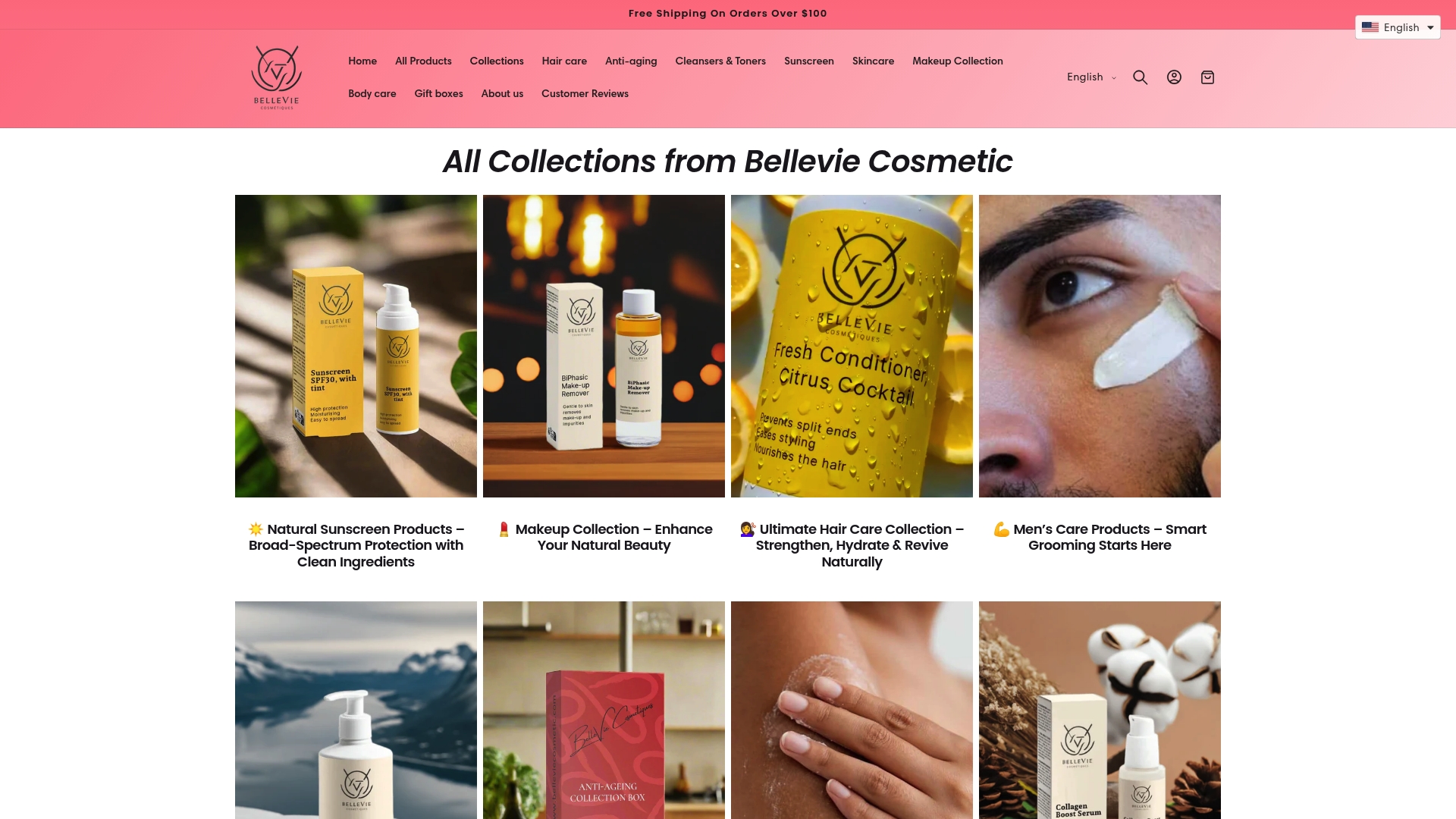Skincare shelves are bursting with products promising glowing results, but not everything inside those sleek bottles is as harmless as it looks. Over half of mainstream skincare products contain ingredients linked to significant health risks according to the Environmental Working Group. Surprised? Many of these substances actually find their way into your daily routine under names you can barely pronounce and can do more harm than good beneath the surface.
Table of Contents
- Identifying Harmful Ingredients In Skincare Products
- Why Certain Ingredients Are Better Left Out
- The Impact Of Skincare Ingredients On Different Skin Types
- How To Read Labels And Spot Problematic Ingredients
- Making Safer Choices: Alternatives To Avoided Ingredients
Quick Summary
| Takeaway | Explanation |
|---|---|
| Avoid synthetic preservatives like parabens. | Parabens can disrupt hormonal balance and pose long-term health risks. Opt for safer alternatives to protect your health. |
| Recognize the impact of synthetic chemicals on skin. | Many synthetic ingredients can penetrate skin layers, causing inflammation and irritation over time. Understanding these effects is crucial for skincare safety. |
| Choose natural alternatives for skincare products. | Plant-based ingredients like essential oils and botanical extracts offer safe and effective benefits without the risks associated with synthetic chemicals. |
| Personalize skincare based on skin type. | Different skin types require specific ingredients; knowing your skin needs helps prevent adverse reactions and enhances results. |
| Learn to read and decode ingredient labels. | Familiarity with common red flags in ingredient lists helps consumers avoid harmful substances in skincare products and make informed choices. |
Identifying Harmful Ingredients in Skincare Products
Navigating the complex world of skincare ingredients requires understanding which compounds can potentially harm your skin and overall health. While the beauty industry offers countless products promising transformative results, not all ingredients are created equal. Some common skincare components can trigger irritation, allergic reactions, or long term health concerns.
Below is a comparison table summarizing common harmful skincare ingredients mentioned in this article and their associated health risks.
| Ingredient | Common Use | Associated Health Risks |
|---|---|---|
| Parabens | Synthetic preservative | Hormonal disruption, long-term health risks |
| Phthalates | Texture, flexibility agent | Potential reproductive health impact |
| Formaldehyde | Preservative | Known carcinogen |
| Triclosan | Antibacterial agent | Skin irritation, potential endocrine disruption |
| Synthetic fragrances | Fragrance, masking agent | Inflammation, allergic reactions |
| Mineral oils | Moisturizer, emollient | Clogs pores, inhibits skin regeneration |
| Alcohol-based agents | Preservative, quick drying | Strips moisture, dries out skin |
| Silicones | Texture enhancer, smoother | Blocks pores, prevents natural skin breathing |
The Hidden Risks in Everyday Skincare
Most consumers are unaware that many mainstream skincare products contain synthetic chemicals that might provide short term aesthetic benefits but can cause significant underlying damage. Research from the Environmental Working Group reveals that numerous personal care products include ingredients linked to serious health risks.
Key problematic ingredients consumers should watch for include:
- Parabens: Synthetic preservatives potentially linked to hormonal disruptions
- Phthalates: Chemical compounds that may impact reproductive health
- Formaldehyde: A known carcinogenic preservative
- Triclosan: An antibacterial agent connected to skin irritation
Understanding Chemical Interactions
Chemical interactions within skincare products are far more complex than most people realize. Certain ingredients can interact negatively with skin proteins, disrupt natural microbiome balance, or penetrate deeper cellular layers, causing potential long term damage. Some synthetic compounds mimic hormones, potentially triggering inflammatory responses or allergic reactions.
For those seeking cleaner alternatives, check out our comprehensive guide on clean beauty which offers insights into selecting safer, more natural skincare options. Understanding ingredient labels becomes crucial in making informed decisions about personal care products that genuinely support skin health.
Why Certain Ingredients Are Better Left Out
Skincare is not just about looking good but maintaining healthy, resilient skin. Some ingredients might promise quick results but can cause significant long term damage. Understanding which compounds to avoid becomes crucial for maintaining skin health and preventing potential adverse reactions.
The Cellular Impact of Harmful Ingredients
Certain synthetic chemicals penetrate beyond surface layers, interacting directly with skin cells and potentially disrupting natural biological processes. According to dermatological research from the National Institutes of Health, some topical ingredients can trigger inflammatory responses, compromise skin barrier function, and potentially lead to accelerated aging.
Ingredients with potential negative cellular impacts include:
- Synthetic fragrances: Can cause inflammation and allergic reactions
- Mineral oils: May clog pores and prevent natural skin regeneration
- Alcohol-based products: Often strip natural skin moisture
- Silicones: Can create barrier preventing proper skin breathing
Long Term Health Considerations
Beyond immediate skin reactions, some ingredients raise significant health concerns. Endocrine disrupting chemicals found in personal care products can potentially interfere with hormonal systems, potentially impacting reproductive health and metabolic functions.
Consequently, making informed choices about skincare ingredients becomes more than a cosmetic decision—it represents a critical aspect of personal health management. Learn more about clean beauty alternatives in our comprehensive guide, which provides deeper insights into selecting products that support both skin health and overall wellness.
Choose What’s Right for Your Skin — Not What’s Trending
Many beauty products hide harsh chemicals behind fancy labels. At BelleVie, we believe in ingredient transparency — clean, natural, and science-backed skincare that respects your health and the planet.
👉 Discover toxin-free skincare at BelleVieCosmetic.com
The Impact of Skincare Ingredients on Different Skin Types
Skin is a complex and dynamic organ that responds uniquely to different ingredients based on individual genetic makeup, environmental exposure, and underlying health conditions. What works perfectly for one skin type might trigger adverse reactions in another, making personalized skincare a critical consideration for maintaining healthy skin.
This table organizes the recommended ingredient types based on different skin types to help personalize skincare choices for optimal skin health.
| Skin Type | Recommended Ingredient Approach |
|---|---|
| Oily Skin | Lightweight, non-comedogenic ingredients |
| Dry Skin | Hydrating, barrier-repairing compounds |
| Sensitive Skin | Hypoallergenic, minimal ingredient formulations |
| Combination Skin | Balanced, adaptable skincare solutions |
Understanding Skin Type Sensitivity
Research published in the Journal of Dermatological Science highlights that skin sensitivity varies dramatically across different individuals. Factors like genetic predisposition, hormonal balance, and environmental stress play significant roles in determining how skin reacts to specific ingredients.
Key considerations for different skin types include:

- Oily skin: Requires lightweight, non-comedogenic ingredients
- Dry skin: Needs hydrating and barrier-repairing compounds
- Sensitive skin: Demands hypoallergenic and minimal ingredient formulations
- Combination skin: Benefits from balanced, adaptable skincare solutions
Molecular Interactions and Skin Response
Ingredients interact differently with skin cells depending on molecular structure and skin type characteristics. Some compounds can penetrate deeper layers, potentially causing inflammation or disrupting natural skin processes. Certain individuals might experience immediate reactions, while others develop cumulative sensitivities over time.
Discover expert tips for enhancing your skincare results and learn how to customize your routine based on your unique skin profile. Understanding these nuanced interactions empowers consumers to make informed decisions about their skincare choices.
How to Read Labels and Spot Problematic Ingredients
Deciphering skincare product labels requires more than a casual glance. Understanding ingredient lists becomes a critical skill in protecting your skin from potentially harmful compounds. Modern cosmetic labeling can be intentionally complex, designed to obscure potentially problematic ingredients behind scientific terminology.
Decoding Ingredient Nomenclature
According to the Environmental Working Group, cosmetic labels often use intentionally complicated language to mask potentially harmful substances. Ingredients are typically listed in descending order of concentration, which means the first few items represent the product’s primary components.
Key red flags to watch for when reading ingredient lists include:
- Chemical prefixes: Terms like methyl, propyl, butyl suggesting synthetic preservatives
- Ambiguous terms: Catch all phrases like “fragrance” or “parfum” potentially hiding multiple undisclosed chemicals
- Unpronounceable compounds: Long, complex scientific names often indicating synthetic substances
- Generic descriptors: Broad terms that don’t specify exact molecular composition
Understanding Label Transparency
True ingredient transparency goes beyond simply listing components. Consumers should recognize that regulatory standards for cosmetic labeling vary significantly across different regions. Some ingredients considered safe in one country might be restricted or banned in another.
Explore our comprehensive guide to product labeling to gain deeper insights into making informed skincare choices. Developing label literacy empowers consumers to select products aligned with their health and wellness goals, protecting both skin and overall well being.
Making Safer Choices: Alternatives to Avoided Ingredients
Navigating the world of skincare ingredients involves more than simply avoiding harmful compounds. It requires a proactive approach to selecting natural, scientifically-backed alternatives that provide similar benefits without potential health risks. Modern skincare science has evolved to offer innovative solutions that prioritize both skin health and overall wellness.
Natural Preservative and Protective Alternatives
According to the National Institute of Environmental Health Sciences, plant-based ingredients offer powerful alternatives to synthetic chemicals. Natural compounds can provide preservation, hydration, and protection without disrupting hormonal systems or causing cellular damage.
Key natural alternatives to synthetic ingredients include:
![]()
- Essential oils: Natural antimicrobial and preservation agents
- Plant-based oils: Jojoba, sunflower, and coconut oils as moisturizing replacements
- Botanical extracts: Providing antioxidant and protective properties
- Vitamin-based preservatives: Natural compounds like tocopherol (Vitamin E)
Your Skin Deserves Better
Say goodbye to parabens, sulfates, and artificial fragrances. Explore our clean beauty collection made with organic plant extracts and dermatologically tested formulas.
💚 Switch to healthy skincare today → BelleVieCosmetic.com/collections
Holistic Ingredient Selection Strategies
Choosing safer skincare ingredients requires a comprehensive understanding of molecular interactions and potential long term effects. Natural doesn’t automatically mean safe, and synthetic doesn’t always mean harmful. The key lies in understanding ingredient sources, processing methods, and potential interactions with individual skin types.
Explore our comprehensive guide to sustainable skincare packaging to understand how ingredient selection connects with broader environmental and health considerations. Making informed choices means looking beyond marketing claims and understanding the deeper science of skincare ingredient selection.
Upgrade Your Routine and Protect Your Skin
Worried about hidden chemicals, harmful preservatives, and synthetic compounds lurking in your skincare? After learning that many mainstream products can trigger irritation or long-term health issues, making the right choices can feel overwhelming. You deserve skincare that nourishes and supports your skin without the risk of parabens, silicones, or undisclosed fragrances.
Experience the confidence of pure, clinically backed beauty with our natural skincare collection. Each formula is free from the harmful ingredients discussed in the article, helping you avoid irritation and future skin concerns. Enjoy certified organic ingredients, gentle alternatives to harsh chemicals, and complete transparency in every product.

Take control of your glow today. Explore our full range at BelleVieCosmetic.com or browse clean face care essentials for solutions tailored to your needs. Make the switch now for safer, healthier skin and see results you can trust.
Frequently Asked Questions
What are the harmful ingredients to avoid in skincare products?
Many skincare products contain harmful ingredients such as parabens, phthalates, formaldehyde, and triclosan, which can lead to irritation, hormonal disruptions, or other health concerns.
How can I identify harmful ingredients in my skincare products?
To identify harmful ingredients, read the ingredient label carefully. Look for chemical prefixes like methyl, propyl, or butyl, and ambiguous terms like “fragrance” that may mask higher-risk substances.
What skin types are affected differently by harmful ingredients?
Different skin types react uniquely to ingredients: oily skin requires lightweight products, dry skin needs hydration, sensitive skin should seek hypoallergenic options, and combination skin benefits from balanced formulations.
Why is it important to understand the ingredients in skincare products?
Understanding skincare ingredients is crucial for maintaining healthy skin and preventing adverse reactions. Knowledge empowers consumers to make informed choices that support both skin health and overall well-being.
